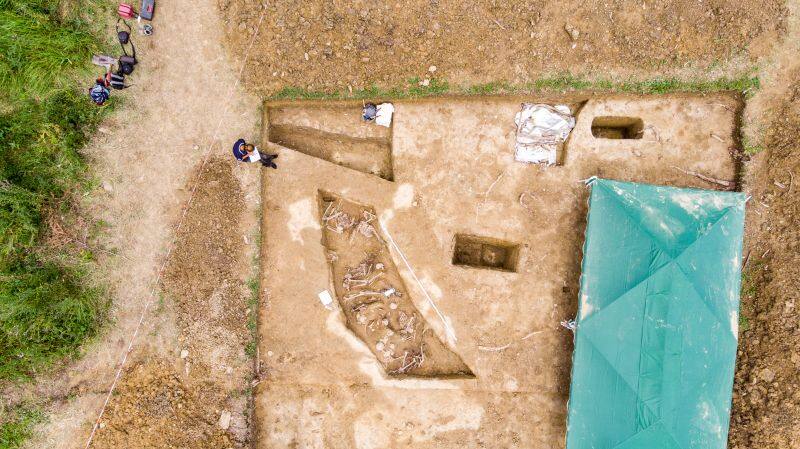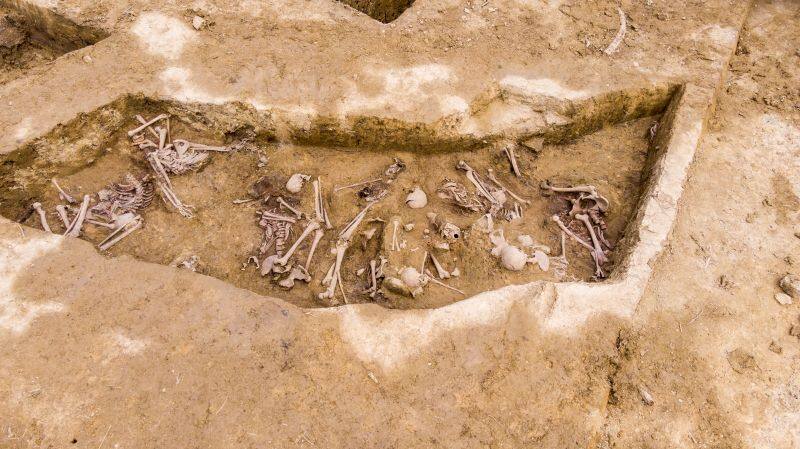

Two cemeteries from the First World War period were discovered and explored by Jagiellonian University archaeologists near Łupków in Podkarpacie, Poland. For five years, researchers from the JU Institute of Archaeology together with local history buffs have been restoring the memory of bloody battles fought more than 100 years ago during the First World War at the current Polish-Slovak border in Subcarpathia.
The project Karpackie Epizody Wielkiej Wojny (Carpathian Episodes of the Great War) covers a vast area of historical battlefields east of Beskid on Czeremcha pass, which witnessed bloody fighting between the Austro-Hungarian and Russian troops in the late 1914 and early 1915. The archaeological work has revealed extensive remains of First World War campaigns, including fortifications built according to the Austro-Hungarian principles of the art of war, communication lines, artillery and machine gun emplacements, dugouts serving as command posts, ammunition dumps and shelters for common soldiers, as well as the burial sites of fallen combatants.


The research not only aims to uncover the physical traces of battles, but also to highlight the fact that this was also a ‘Polish war’, as Poles from the Subcarpatian region accounted for as much as 95 percent of soldiers in some of the Austro-Hungarian units.
This year’s work, conducted by the JU Institute of Archaeology, the Komańcza district authorities, and local history buffs, focused on the search for forgotten burial places of soldiers fallen during the winter battles of Łupków Pass in 1915.
“After the fighting subsided , the dead were buried on the battlefield, often using shell craters or parts of trenches. Only some time later, after the re-establishment of state authority in the region, the bodies were exhumed and relocated to newly created war cemeteries. At least two such places used to be located in Łupków and the nearby Zubeńsko”, says Dr Marcin Czarnowicz, who has been leading the excavations since their beginning.
The tragic events that affected the areas around Łupków right after the Second World War led to the depopulation of the local villages, which until then had teemed with life. The memories of the World War I soldiers and their graves vanished along with the villagers. At the moment it is futile to search for any traces of cemeteries in the local landscape. The researchers were provided with data on specific places of burial by local history buffs. This information was proved correct by non-invasive studies consisting in the analysis of digital models of terrain around Łupków and Zubeńsko, as well as ground-penetrating radar survey, which, in turn, provided the basis for the selection of the excavation sites.
As indicated by the expedition members, the Łupków cemetery consisted of two sectors, where Austro-Hungarian and Russian soldiers were buried separately. The situation was different in Zubeńsko, where graves had the form of four semi-circles. The bodies of soldiers from both sides were buried in three of them, along with numerous items, including parts of military equipment, uniform buttons, and some few personal items.
“The research conducted near Łupków train station delivered surprising results. Next to the station, there is a statue described by Jaroslav Hašek in The Fateful Adventures of the Good Soldier Švejk During the World War. Bodies of German soldiers who died when crossing the pass were expected to be buried at the foot of the obelisk. Yet, it turned out they had been exhumed, which can’t have happened earlier than in 1943, as indicated by cartridge cased found in the backfill of the grave”, says Dr Marcin Czarnowicz. He also adds: “We hope that, in collaboration with the local government, we will soon be able to open an exhibition showing the results of our work and that it will be possible to visit the cemeteries using our digital guide, developed in cooperation with the JU Centre for Technology Transfer CITTRU.”
This season, the Jagiellonian University archaeologists worked with the support of researchers from the Institute of Archaeology and Ethnography of the Polish Academy of Sciences and the Jagiellonian University Medical College.






































